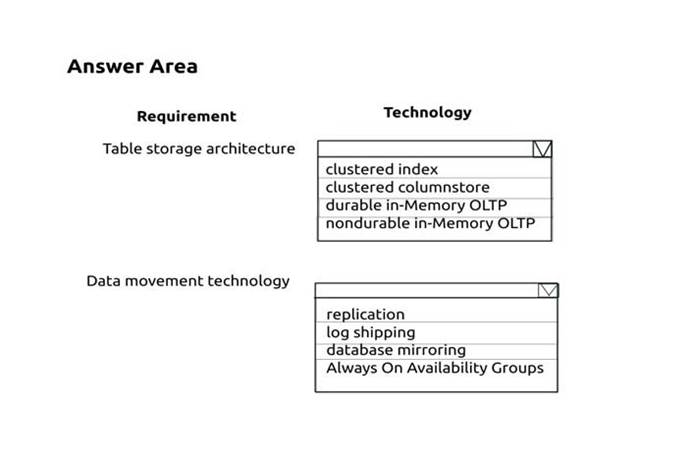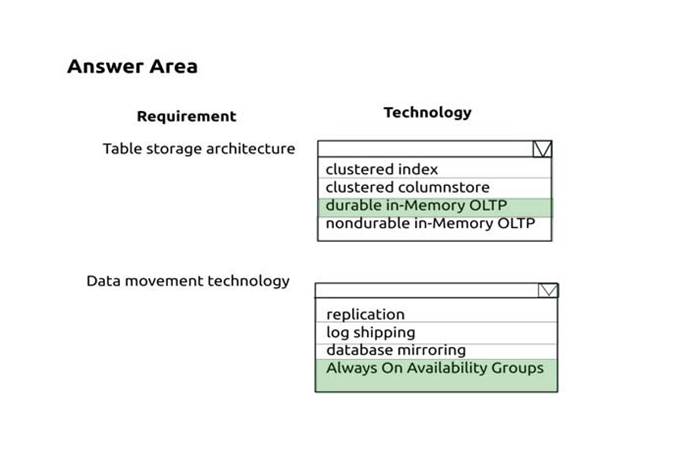HOTSPOT You are designing a data warehouse that will be clustered across four servers. Several of the tables in the data warehouse contain transient data that you can rebuild as needed. The schema for the data changes periodically. You must minimize the work required to make schema changes and deploy those changes across the server farm. Administrators must be able to make the following schema changes:
![]()
Adding columns to tables
Removing columns from tables
Adding tables
Removing tables
Changes to the transient data are done as singleton operations. You must make the data available on all the servers in the server farm. Data movement between servers must occur in real time or near real time. You must be able to run SELECT statements against the data from any server at any time. You need to configure the environment.
Which technologies should you implement? To answer, select the appropriate technologies in the answer
area. NOTE: Each correct selection is worth one point.

Answer: 
Explanation:
Box 1: Durable in-Memory OLTP Databases containing memory-optimized tables, with or without native compiled stored procedures, are fully supported with Always On Availability Groups. There is no difference in the configuration and support for databases which contain In-Memory OLTP objects as compared to those without.
Box 2: Always on Availability groups The Always On availability groups feature is a high-availability and disaster-recovery solution that provides an enterprise-level alternative to database mirroring. Always On availability groups maximizes the availability of a set of user databases for an enterprise. An availability group supports a failover environment for a discrete set of user databases, known as availability databases, that fail over together. An availability group supports a set of read-write primary databases and one to eight sets of corresponding secondary databases. Optionally, secondary databases can be made available for read-only access and/or some backup operations.
An availability group fails over at the level of an availability replica.
References:
https://docs.microsoft.com/en-us/sql/relational-databases/in-memory-oltp/high-availability-support-for-inmemory-oltp-databases
https://docs.microsoft.com/en-us/sql/database-engine/availability-groups/windows/always-on-availabilitygroups-sql-server

Leave a Reply